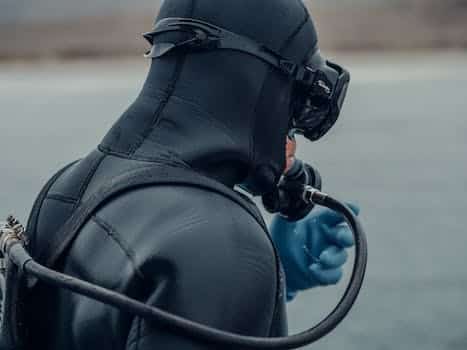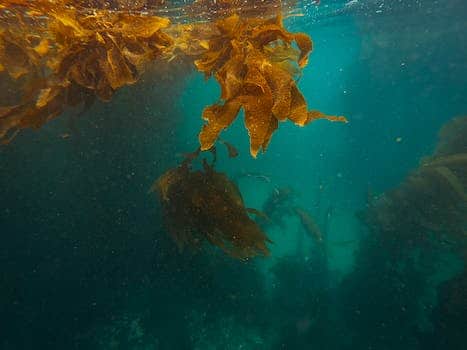Remote islands offer an escape from the hustle and bustle of everyday life, and what better way to experience their beauty than through snorkeling and scuba diving? These activities allow you to explore the vibrant underwater world and witness the diverse marine life that inhabits these secluded locations. Join us as we uncover the best remote island activities for snorkeling and scuba diving.
- 1. Remote Island Activities
- 1.1. Why Choose a Remote Island?
- 1.2. Snorkeling
- 1.3. Equipment Needed
- 1.4. Safety Tips
- 1.5. Best Remote Islands for Snorkeling
- 2. Scuba Diving
- 2.1. Why Scuba Diving is a Must-Do on Remote Islands
- 2.2. Equipment Needed
- 2.3. Safety Tips
- 2.4. Best Remote Islands for Scuba Diving
- 2.5. Different Types of Dives
- 3. Other Activities on Remote Islands
- 3.1. Kayaking
- 3.2. Hiking
- 3.3. Fishing
- 3.4. Beachcombing
- 3.5. Bird Watching
1. Remote Island Activities
Remote islands offer a unique opportunity to explore the ocean and its inhabitants through snorkeling and scuba diving. Snorkeling is a popular activity that allows you to swim on the surface of the water while wearing a mask and fins. This is a great way to witness the beauty of coral reefs and the colorful fish that inhabit them. Scuba diving, on the other hand, takes you deeper into the ocean, where you can explore wrecks, caves, and other underwater formations. Both activities require some training and preparation, but the experience of being surrounded by the vibrant marine life is well worth the effort.
1.1. Why Choose a Remote Island?
Choosing a remote island for your vacation provides a unique and secluded experience that cannot be found in crowded tourist destinations. With fewer people around, you can enjoy the beauty of nature and unwind in peace. Remote islands also offer a variety of activities that are not available elsewhere. So, why choose a remote island? The answer is simple: to escape the hustle and bustle of everyday life and enjoy a serene getaway.
1.2. Snorkeling
Snorkeling is a popular activity for those visiting remote islands. With crystal clear waters, colorful marine life, and stunning coral reefs, it’s no wonder why so many people choose to explore the underwater world through snorkeling. Whether you’re a beginner or an experienced snorkeler, there are plenty of opportunities to discover the beauty of the ocean. Many remote islands offer guided snorkeling tours, which allow visitors to explore the best spots and learn about the local marine ecosystem. Some islands even have unique snorkeling experiences, such as swimming with whale sharks or exploring underwater caves. No matter where you choose to snorkel, it’s sure to be a memorable experience.
1.3. Equipment Needed
To fully enjoy the remote island experience, it is important to have the right equipment when engaging in activities such as snorkeling and scuba diving. For snorkeling, a mask, snorkel, and fins are essential. The mask allows for clear vision underwater, while the snorkel enables easy breathing without having to surface for air. Fins come in handy for maneuvering through the water with ease. When scuba diving, a wetsuit, regulator, dive computer, and buoyancy control device are necessary. The wetsuit keeps the body warm in colder waters, while the regulator ensures proper breathing while submerged. The dive computer tracks important information such as depth and remaining air supply. The buoyancy control device allows for easy adjustments of buoyancy levels while exploring the underwater world.
1.4. Safety Tips
When it comes to remote island activities, snorkeling and scuba diving are two of the most popular. However, before you dive into the crystal-clear waters, it’s important to make sure you’re staying safe. Here are some safety tips to keep in mind:
1. Always dive with a buddy. This way, you can watch each other’s backs and ensure that you’re both safe throughout the dive.
2. Check your equipment before diving. Make sure everything is in good working order and that you know how to use it properly.
3. Stay within your limits. Don’t try to push yourself too hard or go too deep if you’re not comfortable doing so.
4. Be aware of your surroundings. Keep an eye out for any potential hazards, such as strong currents or sharp rocks.
By following these safety tips, you can enjoy all the amazing underwater sights that remote islands have to offer with peace of mind.
1.5. Best Remote Islands for Snorkeling
1. Palau
2. Maldives
3. Fiji
4. Bora Bora
5. Great Barrier Reef
6. Seychelles
7. Galapagos Islands
8. Hawaii
9. Turks and Caicos
10. Roatan Island
2. Scuba Diving
Scuba diving is a thrilling activity that allows you to explore the underwater world and discover its many wonders. Remote islands offer some of the best scuba diving experiences, with crystal-clear waters and diverse marine life. Whether you’re a beginner or an experienced diver, there are plenty of options to choose from, including reef dives, wreck dives, and night dives. With the help of a skilled instructor, you can discover a whole new world beneath the surface of the ocean.
2.1. Why Scuba Diving is a Must-Do on Remote Islands
Scuba diving is a must-do activity on remote islands for several reasons. Firstly, remote islands are often home to some of the most diverse and beautiful marine life in the world. From vibrant coral reefs to schools of colorful fish, there is no shortage of underwater wonders to explore. Secondly, the peace and tranquility of remote islands make for a truly immersive and relaxing scuba diving experience. With no crowds or distractions, you can fully immerse yourself in the underwater world. Finally, scuba diving on remote islands is often much more affordable than in popular tourist destinations, making it an accessible activity for travelers on a budget. So if you’re planning a trip to a remote island, don’t miss out on the incredible scuba diving opportunities available!
2.2. Equipment Needed
When it comes to scuba diving, having the right equipment is essential for a safe and enjoyable experience. The basic equipment needed includes a wetsuit, fins, a mask, a regulator, a buoyancy control device, and a dive computer. These items can be rented at most scuba diving centers, but many experienced divers prefer to bring their own gear for a more comfortable and personalized fit. It is also important to check the condition and fit of all equipment before diving to ensure that everything is working properly and will not cause any issues during the dive.
2.3. Safety Tips
Scuba diving is an exhilarating activity that can provide a unique and unforgettable experience. However, it is important to prioritize safety at all times when scuba diving. Here are some tips to help ensure a safe and enjoyable scuba diving experience: always use proper equipment and make sure it is in good condition, never dive alone, always check the weather and water conditions before diving, stay within your training and experience level, and always communicate with your diving partner or group. By following these safety tips, you can make the most of your scuba diving adventure while minimizing any potential risks.
2.4. Best Remote Islands for Scuba Diving
Remote islands offer some of the best scuba diving experiences in the world. The crystal clear waters and diverse marine life make for an unforgettable adventure. Here are some of the best remote islands for scuba diving:
1. Palau – Located in the western Pacific Ocean, Palau is a scuba diver’s paradise. The islands offer a variety of dive sites, including coral walls, drop-offs, and blue holes. Scuba divers can expect to see a wide range of marine life, including sharks, manta rays, and sea turtles.
2. Maldives – The Maldives is known for its stunning beaches and turquoise waters, but it’s also a top destination for scuba diving. With over 1,000 islands, there are plenty of dive sites to choose from. Scuba divers can expect to see colorful coral reefs, schools of fish, and even whale sharks.
3. Fiji – Fiji is home to some of the most beautiful coral reefs in the world. Scuba divers can explore a variety of dive sites, including wrecks, caves, and coral gardens. Fiji is also known for its shark diving, where scuba divers can get up close and personal with bull sharks and tiger sharks.
4. Galapagos Islands – The Galapagos Islands are a UNESCO World Heritage Site and a top destination for scuba diving. The islands are home to a diverse range of marine life, including sea lions, marine iguanas, and hammerhead sharks. Scuba divers can expect to see unique underwater landscapes, including volcanic rock formations and underwater lava tunnels.
2.5. Different Types of Dives
Scuba diving is a popular activity for those who love to explore the wonders of the ocean. There are many different types of dives that cater to varying levels of experience. Some of the most popular types of dives include drift diving, wreck diving, deep diving, night diving, and cave diving. Each type of dive offers a unique experience for divers, allowing them to explore different environments and marine life. It is important to choose the right type of dive based on your level of experience and comfort level underwater.
3. Other Activities on Remote Islands
In addition to snorkeling and scuba diving, remote islands offer a variety of other activities for travelers. One popular option is hiking or trekking through the island’s scenic landscapes. Many remote islands have trails that lead to breathtaking viewpoints and hidden waterfalls. Another activity that is unique to certain remote islands is sea turtle watching. Some islands are home to nesting sea turtles and offer guided tours to witness these amazing creatures up close. For those seeking a more relaxed experience, remote islands are often known for their pristine beaches and crystal-clear waters, perfect for sunbathing and swimming. Additionally, some islands offer cultural experiences such as traditional dance performances or cooking classes featuring local cuisine.
3.1. Kayaking
Kayaking is another fantastic activity to engage in while exploring remote islands. With its calm and crystal-clear waters, kayaking is an excellent way to get up close and personal with the island’s unique marine life and stunning scenery. Paddling through the secluded bays and coves of a remote island can be a peaceful and rejuvenating experience that allows you to connect with nature and escape the hustle and bustle of everyday life. Whether you’re a seasoned kayaker or a beginner, there are plenty of opportunities to explore the waters around remote islands and discover their hidden treasures.
3.2. Hiking
Hiking is another popular activity on remote islands, offering breathtaking views of the surrounding landscape and a chance to connect with nature. Many islands have well-maintained hiking trails that range in difficulty from easy to strenuous, so there’s something for everyone. Whether you’re looking to take a leisurely stroll or challenge yourself with a steep climb, hiking is a great way to explore the hidden gems of remote islands.
3.3. Fishing
While snorkeling and scuba diving may be the main attractions on remote islands, there are plenty of other activities to enjoy as well. One popular option is fishing, with many islands offering guided fishing tours or the opportunity to rent equipment and try your luck on your own. Whether you’re a seasoned angler or just looking for a new experience, fishing on a remote island can be a thrilling and rewarding activity. Other popular activities include hiking, kayaking, and exploring the local culture and cuisine. With so much to see and do, a trip to a remote island can be an unforgettable adventure.
3.4. Beachcombing
Beachcombing is a fun and relaxing activity that can be enjoyed on many remote islands. It involves walking along the beach and searching for interesting items that have washed up from the ocean. This can include seashells, driftwood, and even sea glass. Beachcombing is a great way to connect with nature and appreciate the beauty of the ocean. It can also be a fun way to collect souvenirs from your trip to the remote island.
3.5. Bird Watching
Bird watching is another popular activity on remote islands. These islands are home to a wide variety of bird species, many of which are not found anywhere else in the world. Bird enthusiasts can spend hours observing and photographing the unique behaviors and habitats of these birds. Some of the most popular remote islands for bird watching include the Galapagos Islands, Seychelles, and Hawaii. To make the most of your bird watching experience, it is recommended to bring a good pair of binoculars and a field guide to help you identify the different species.
Conclusion
In conclusion, snorkeling and scuba diving are two of the best remote island activities that one can engage in. These activities provide an opportunity to explore the beauty of the underwater world, and to see unique and exotic marine life. Whether you are a beginner or an experienced diver, there are plenty of options available that will cater to your needs. So pack your bags, grab your gear, and get ready to experience the thrill of snorkeling and scuba diving on a remote island.





